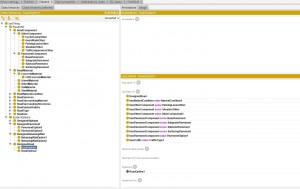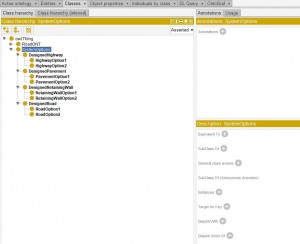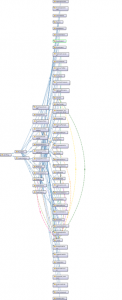The ontology is developed by integrating the five individual systems to represent a road system in the simplest way to assist and be used and developed by engineers when designing and structuring a roadway. Of course, minor changes had to be made to the individual systems to align with the road system and have a more straightforward design process.
For designing a proper roadway, some critical factors should be taken beforehand, such as:
- Design speed; It’s critical that roadway engineers design roads that allow drivers to travel at the right speed. This includes developing narrow lane widths, tighter turning radiuses, and other speed management techniques.
- Topography is also essential in roadway design, it determines the arrangement of terrain, the different gradient increases, and the construction cost. It also covers the physical location of the roadway and the surrounding areas.
- Sustainability, traffic, people, effective management of surface water, and safety also affect the design of roadways.
Integration of Ontologies:
As it’s an integration of individual ontologies to form one main system, roadway, the classes, and subclasses were merged to serve the main system being developed, as shown in the pictures. For example, the materials used in all the individual systems were listed in the same class (road material) as they are all materials used to build the road system. In integrating five systems into a single road system, we have integrated all the required and necessary classes from each system into our final system. The classes in this system are the road component, road material, natural road condition, services, surrounding materials and structures, road system failures, road type, and road use. And the subclasses of each of these are the properties from each system that are required and needed for the systems’ design. Airport pavement was one of our five systems; however, it is not in our final system as airport pavement, but it does have the sub-class highway pavement under the class pavement use. So, here we used that system as highway pavement with all the attributes mentioned in its system. The protégé represents this OWL ontology tool and uses the Camel-back style for names.
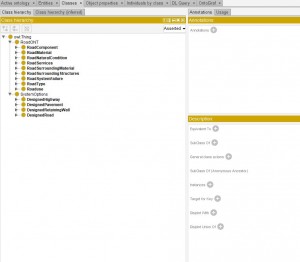 ONT Classes of the road system
ONT Classes of the road system
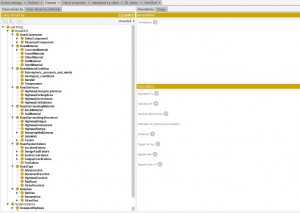 ONT classes and sub-classes of the road system
ONT classes and sub-classes of the road system
Necessary connections were added to define properties and to explain the relations between the classes in a separated hierarchy as siblings in the description area.
For example: ‘is component of’ can be used to link the pavement component of the component class with the concrete material of the material class. At the same time, in a reverse way, ‘it has component,’ that can be used to link the pavement component of the domain component with the concrete material of the material class. To define the reverse description, we define ‘is component of’ as the inverse of ‘has component’ in the description view. Ranges and domains of classes and individuals were defined and connected as descriptions.
For the universal and existential restrictions, the obligatory items of each individual system that must be included in the roadway were defined as expressions in the description view.
After defining all the properties and restrictions, multiple design options were created. since the design is an integration of systems, that means that each individual design option became a new design option for the roadway. a small change in the components generates a new design option.
Ontology of the road system
Thank you for reading! In case you are interested in knowing more about the design and ontology, feel free to download the OWL and Dynamo files!
